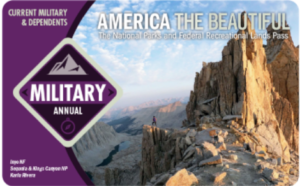By Keith G. Tidball, PhD and Coral Owen, MS
The Military Family Readiness System is a network of programs and services operated by the Defense Department and other federal, state, and community-based agencies and organizations. The Military Family Readiness System promotes military family well-being by offering programs and services that enhance family readiness, resilience and quality of life. Collaboration and integration across the system promotes positive outcomes for service members and their families across the domains of military family readiness, including career, social, financial, health and community engagement.
The Family Readiness System is based on the concept of an integrated service delivery model for social services, which allows military members and their families to access any combination of services they may need through a flexible, single point of entry into the system. Because today’s military force is widely geographically dispersed, the Family Readiness System leverages technology to allow military families the same services regardless of their location.
The Family Readiness System facilitates collaboration between organizations (local, state, national and federal organizations, and military and veteran service organizations) and encourages a holistic approach to serving each family’s needs. This holistic approach includes the role of outdoor environments, outdoor recreation, and the importance of environmental or ecological determinants of health. A large and growing literature exists on the myriad of social and psychological benefits of natural environments (Wicks et al., 2022)
When it comes to mental health, and despite the fact that both the U.S. Department of Veterans Affairs and the U.S. Department of Defense (2017) provide an impressive spectrum of treatment approaches, many of these approaches have not demonstrated consistent long-term clinical effects (Polusny et al., 2015), as many patients still have diagnosable Post Traumatic Stress following treatment (Steenkamp et al., 2015). In this context, it is not surprising that Complementary and Alternative Medicine (CAM) (Benedek & Wynn, 2016) and Complementary Integrative Health (CIH) approaches, especially nature-based approaches, are being explored as viable treatment options, as they leverage individual interests and motivations for participation (National Center for Complementary and Integrative Health, 2015).
As nature-based approaches have gained popularity across a variety of disciplines, therapeutic recreation (TR) practitioners have used nature-based interventions and activities to address functional outcomes and provide recreation opportunities for military and veteran populations with Post-Traumatic Stress (Hawkins et al., 2016, Craig et al., 2020). Multiple types of nature-based approaches, such as outdoor adventure therapy, wilderness therapy, outdoor experiential therapy, and eco-therapy utilize the natural environment for specific therapeutic outcomes (Poulsen et al., 2015). Although this line of research is relatively new, preliminary evidence suggests that nature-based recreation approaches merit continued investigation to evaluate efficacy and implementation within the DoD, the VA, and community-based TR and recreation settings serving military personnel, military families, and veterans (Townsend et al., 2018). Further, there are efforts to move the clinical community to consider prescribing times spent outdoors to address health and wellbeing concerns beyond PTS. Enter the term “Rx” into this conversation, such as seen in terms like OutdoorsRx or EcoRx, which we will return to in future blog posts. Given all this, and consistent with a familiar community-capacity building step of inventorying the resources available, what resources can military family practitioners avail themselves of?
Community Capacity Cornerstones – Green Spaces and Fun Places
In a U.S. National Parks Service webinar exploring the intersection of Nature and Health, first author Keith Tidball recently gave a presentation about the health and well-being implications of our parks, the green spaces and fun places that serve as community capacity cornerstones. He presented his talk alongside two other experts in the field. One thing that was agreed upon was the critical importance of making sure that there are multiple ways for diverse audiences to learn about where parks are located near them. To that end, we highly recommend that military practitioners avail themselves of the excellent resources provided by the National Parks Service, especially their Parkfinder App, as well as the Military One Source “Best Kept Secrets” recreational facilities locator.
Also, don’t forget that current U.S. military members and their dependents in the Army, Navy, Air Force, Marines, Coast Guard, and Space Force, as well as Reserve and National Guard members, are eligible for the America the Beautiful interagency pass, granting free access to lands managed by the National Park Service and U.S. Fish & Wildlife Service and also standard amenity fees (day use fees) at lands managed by the U.S. Forest Service, Bureau of Land Management, Bureau of Reclamation, and U.S. Army Corps of Engineers. A pass covers the pass owner and all occupants in a personal vehicle at sites that charge per vehicle or, the pass owner and up to three additional adults (16 and over) at sites that charge per person. Children ages 15 or under are admitted free. And speaking of children, the Every Kid Outdoors initiative provides another avenue to access green spaces and fun places, for Fourth Graders!
 Though knowing where National Parks are located is helpful in terms of inventorying community capacity, perhaps an even more relevant community capacity cornerstone are the opportunities right on post at many installations. There are two primary access points to these on-post green spaces and fun spaces. The first is DoD’s Natural Resource Program, which oversees the stewardship of the natural resources on the vast acreage under DoD’s control. The Department of Defense manages approximately 27 million acres of land on 338 military installations, much of which have some type of access for service members and their families for recreation, and some of which are available to the public for recreation and are largely protected from development. Of interest to military families practitioners is the recent DoD and Department of Interior partnership that provides $80 million to preserve Natural Landscapes around military installations to enhance outdoor recreation opportunities.
Though knowing where National Parks are located is helpful in terms of inventorying community capacity, perhaps an even more relevant community capacity cornerstone are the opportunities right on post at many installations. There are two primary access points to these on-post green spaces and fun spaces. The first is DoD’s Natural Resource Program, which oversees the stewardship of the natural resources on the vast acreage under DoD’s control. The Department of Defense manages approximately 27 million acres of land on 338 military installations, much of which have some type of access for service members and their families for recreation, and some of which are available to the public for recreation and are largely protected from development. Of interest to military families practitioners is the recent DoD and Department of Interior partnership that provides $80 million to preserve Natural Landscapes around military installations to enhance outdoor recreation opportunities.
The second primary access point has links to the first, and that is the Branch-Specific Quality of Life Programming. The U.S. military has a long history of offering services to lift morale among service members. In the late 1800s, installations housed retail and social outlets known as Canteen Associations. Over time, these offerings, referred to as Morale, Welfare and Recreation, or MWR, grew to include restaurants, libraries and gymnasiums. Today, MWR offers nearly 5,000 leisure and support programs for service members, their families and other eligible personnel. These free or low-cost recreational opportunities include recreation programs, youth activities, and outdoor opportunities. For example, U.S. Navy MWR is currently hosting the 8th annual Great Navy Campout, an effort to “celebrate outdoor recreation and camping as a way to connect with nature and wildlife.” Below is a handy reference to the various branch specific MWR websites – we encourage you to help your service members to Get Outside!
References
Craig, P., Alger, D., Bennett, J., & Martin, T. (2020). The Transformative Nature of Fly-Fishing for Veterans and Military Personnel with Posttraumatic Stress Disorder. Therapeutic Recreation Journal, 54(2), 150-172. https://doi.org/10.18666/TRJ-2020-V54-I2-9965.
Benedek, M. & Wynn, G.H. (2017). Complementary and Alternative Medicine for PTSD. European Journal for Person Centered Healthcare, 5(2), 283-287. http://dx.doi.org/10.5750/ejpch.v5i2.1302
Hawkins, B., Townsend, J., & Garst, B. (2016). Nature-Based Recreational Therapy for Military Service Members: A Strengths Approach. Therapeutic Recreation Journal, 50(1), 55-74. http://dx.doi.org/10.18666/TRJ-2016-V50-I1-6793.
Hawkins, B. L., Townsend, J. A., Heath, S. E., & Lipton, K. (2018). The preliminary effects of a recreation-based military family camp on family functioning. American Journal of Recreation Therapy, 17(3), 15–24. https://doi.org/10.5055/ajrt.2018.0164
Poulsen, D. V., Stigsdotter, U. K., Djernis, D., & Sidenius, U. (2016). ‘Everything just seems much more right in nature’: How veterans with post-traumatic stress disorder experience nature-based activities in a forest therapy garden. Health Psychology Open, 3(1). https://doi.org/10.1177/2055102916637090
Polusny, M. A., Erbes, C. R., Thuras, P., Moran, A., Lamberty, G. J., Collins, R. C., Rodman, J. L., & Lim, K. O. (2015). Mindfulness-Based Stress Reduction for Posttraumatic Stress Disorder Among Veterans: A Randomized Clinical Trial. JAMA, 314(5), 456–465. https://doi.org/10.1001/jama.2015.8361
Steenkamp, M. M., Litz, B. T., Hoge, C. W., & Marmar, C. R. (2015). Psychotherapy for Military-Related PTSD: A Review of Randomized Clinical Trials. JAMA, 314(5), 489–500. https://doi.org/10.1001/jama.2015.8370
Wicks, C., Barton, J., Orbell, S., & Andrews, L. (2022). Psychological benefits of outdoor physical activity in natural versus urban environments: A systematic review and meta-analysis of experimental studies. Applied Psychology: Health and Well-Being, 14(3), 1037–1061. https://doi.org/10.1111/aphw.12353













